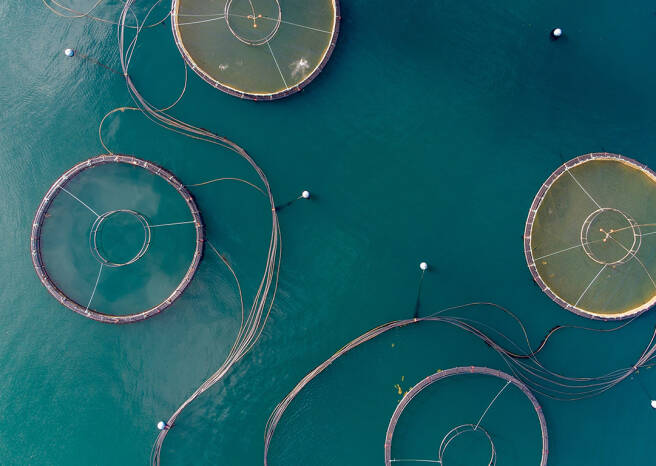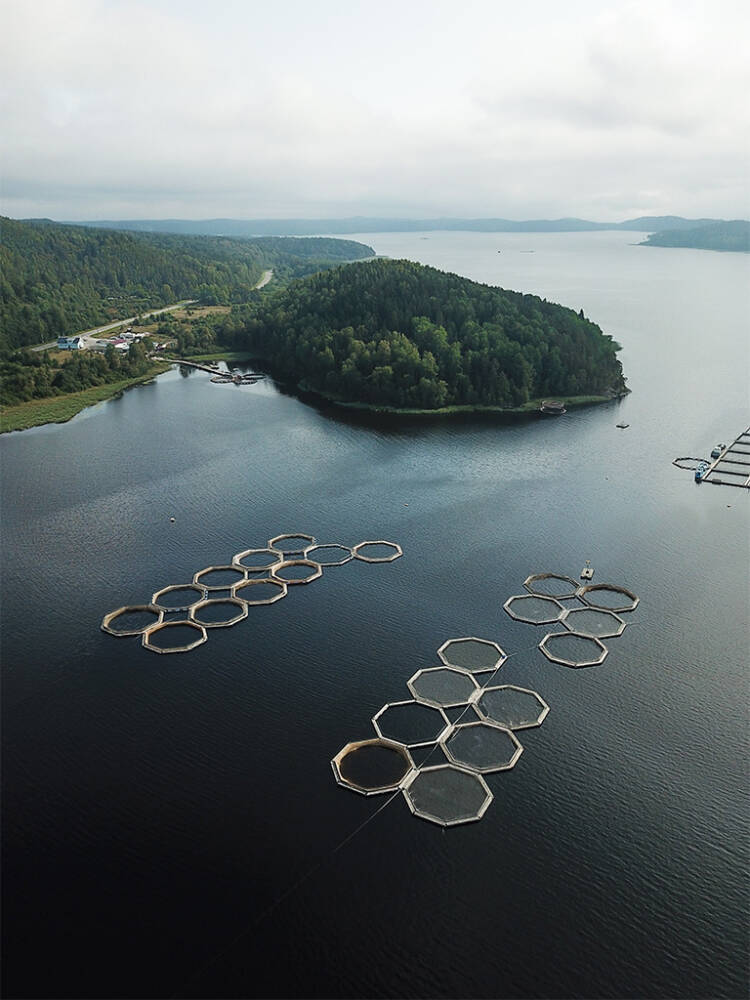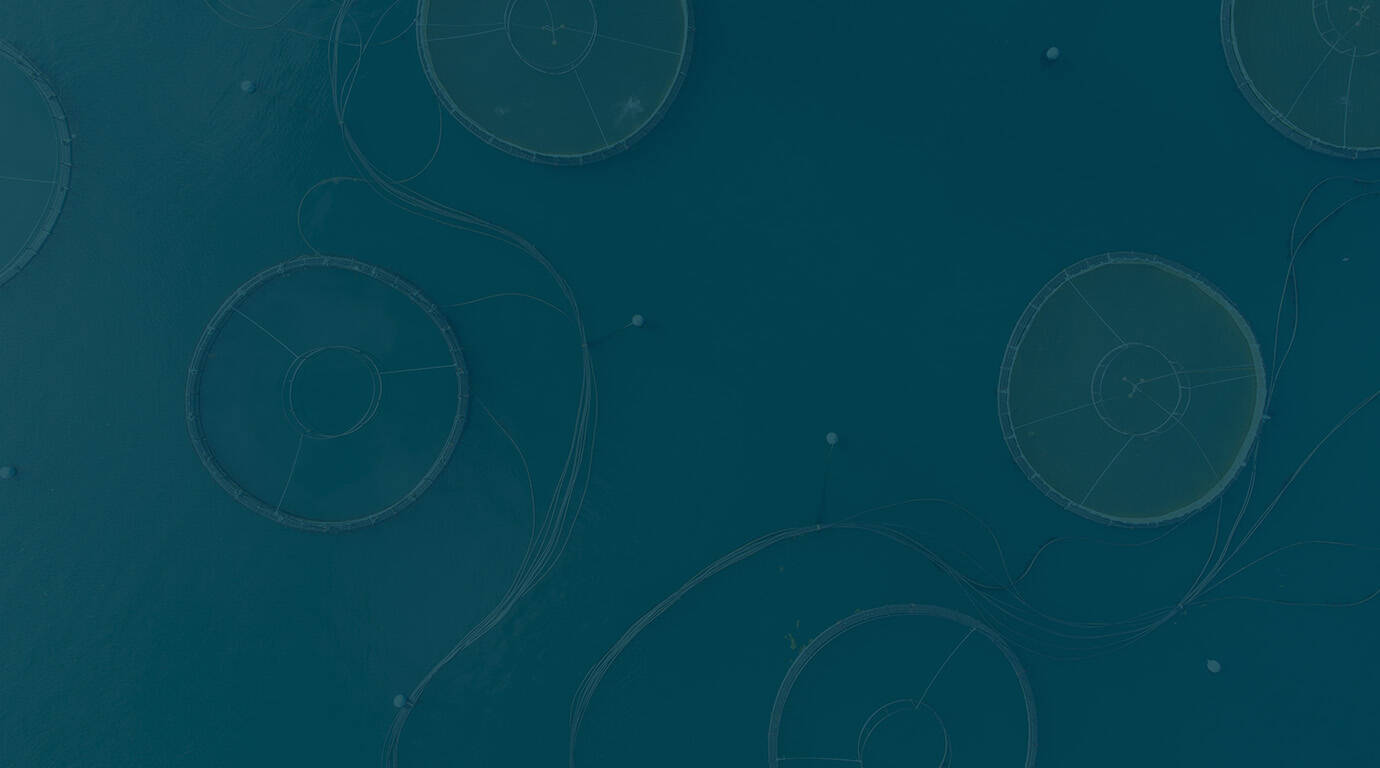Schematic visualization of the co-cultivated species on an IMTA farm
Credits Nemos - Garden Xcelerator
Credits Alora - floating rice field
To conclude this deepdive into our oceans, take a look at these three pioneering farmers.
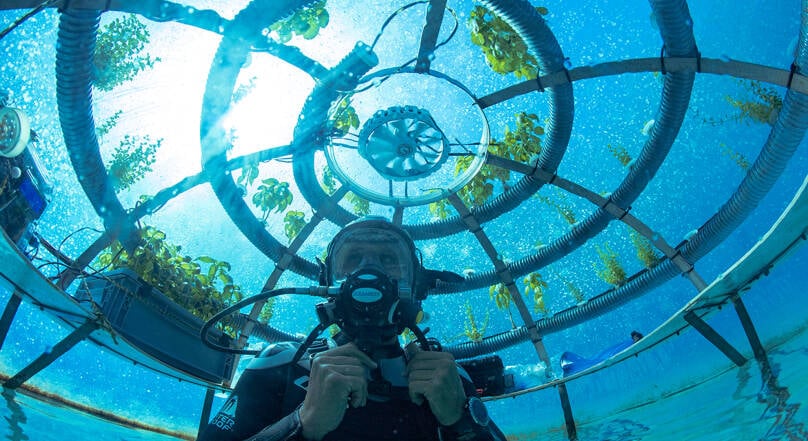
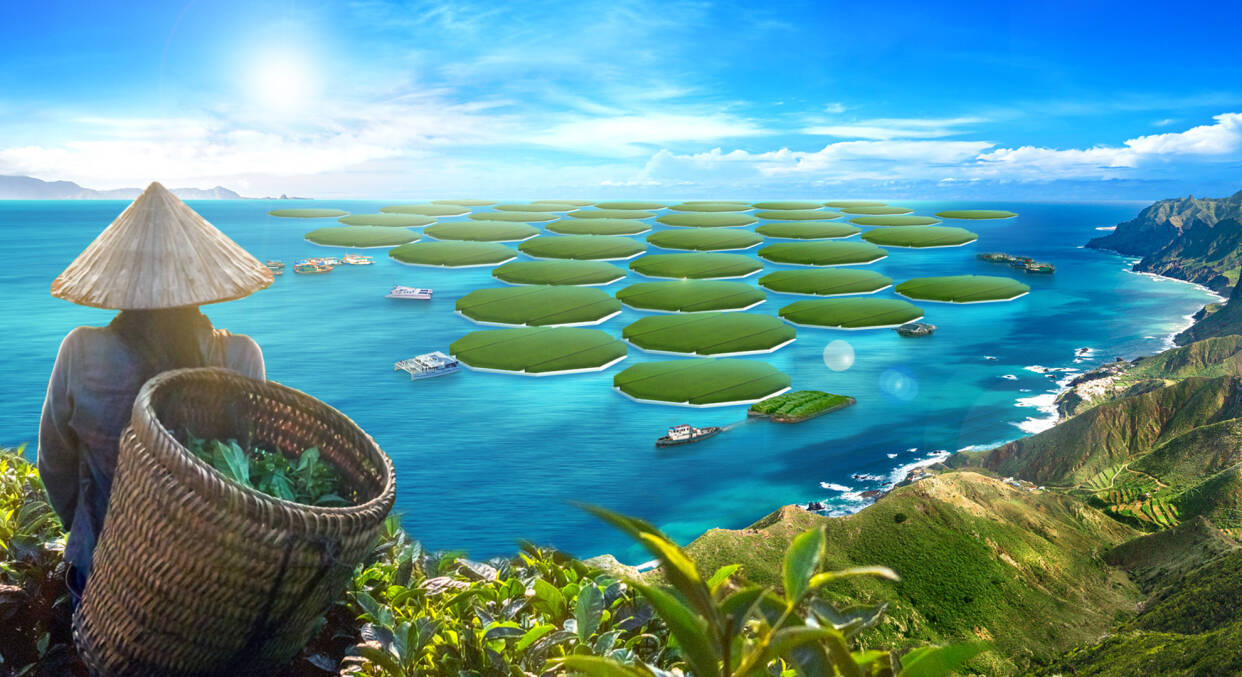
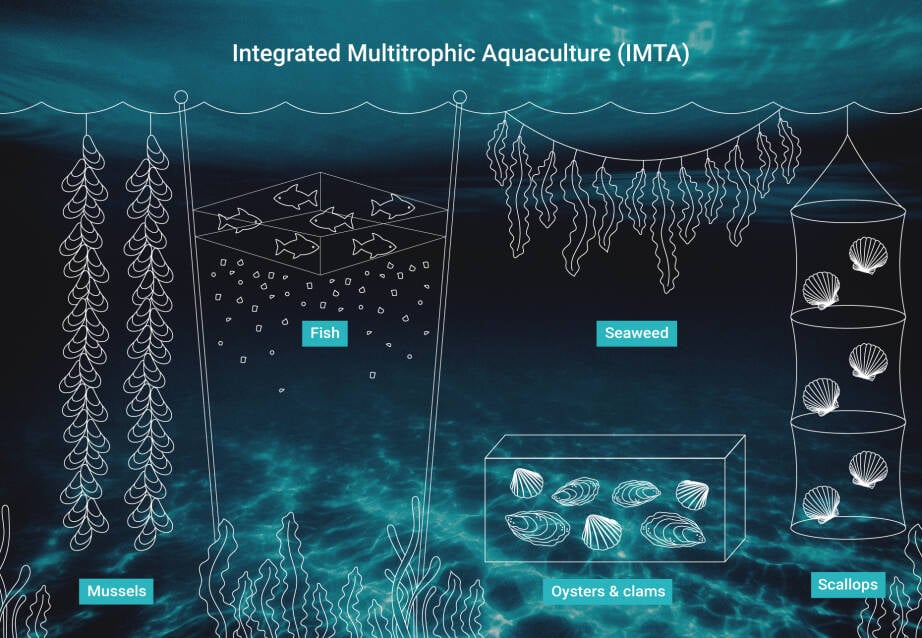
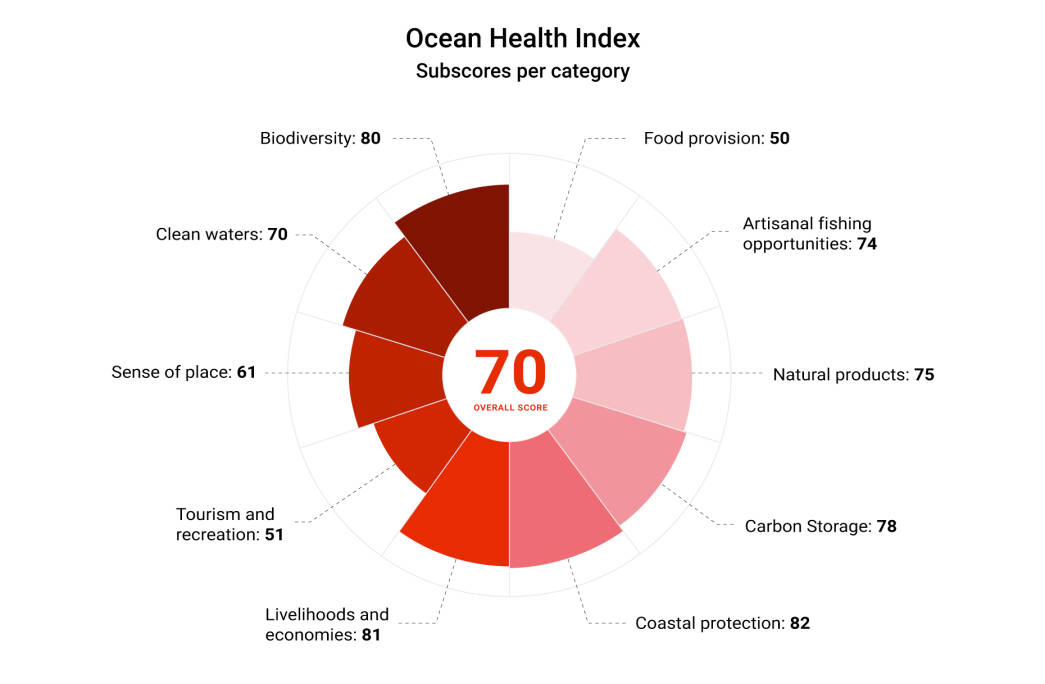
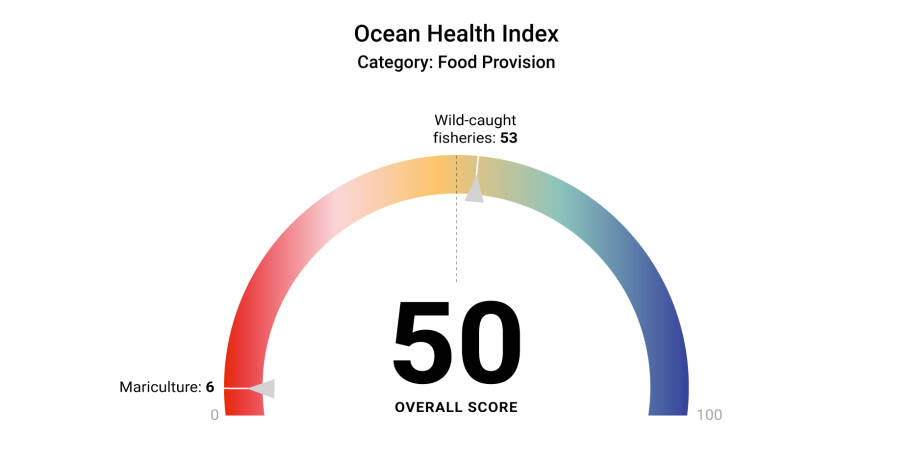
8 min
And now, a step even more outside the box. One group of Dutch farmers are looking at how they can take the farm to the water, and have created the first floating farm in the world. Floating Farm has been operational in Rotterdam since May 2019, and produces fresh food in the city, bringing food production once again close to the consumer in a sustainable, transparent way, with animal welfare as a top priority.
The goal for Floating Farm is to prevent food losses, reduce food transport and improve food quality. They even have a name for it - Trans-FARM-ation. Whether or not this will be scalable remains to be seen, but it has been a great way to create awareness around where our food comes from. Floating Farm focuses on circular farming; in addition to supplying fresh dairy to the city of Rotterdam, the vast proportion of the raw materials used, including the feed for their cows, consists of residual flows from the city itself. For example, cows are fed spent grains from a number of Rotterdam breweries, stale bread from Rotterdam bakers, and grass from the Feyenoord-soccer stadium.
Last April, ocean aquaculture start-up Alora (formerly known as Agrisea) raised a $1.4 million seed round, led by Toyota Ventures and Mistletoe Singapore. Founded in 2019, the start-up has developed a salt-tolerant growing aquaculture technology built to expand food production beyond land masses and into salinated bodies of water. CEO and Co-Founder Luke Young thinks that in 30 years time, it will be common to see large floating crop islands off the coast of many countries that grow a variety of crops suitable for the marine environment.
Alora uses a special gene-editing technique to activate and amplify the ancestral salt-tolerant genes already found in rice to allow them to thrive in ocean saltwater. Currently, Alora plans to start with rice, but will soon expand to other crops as well. Alora wants to create farmlands by installing floating platforms that hold the plants in place while their roots dip into the saltwater and grow as ocean hydroponic plants. The aim is to launch several small pilot farms early in 2022, and transition to full-scale production later in the year.
Off the coast of Italy, the Nemo’s Garden Project by an Italian ocean diving company, Ocean Reef Group, has been experimenting with cultivating strawberries, orchids, basil and lettuce in pods on the ocean floor since 2012. These ocean farmers have found a way to allow land-based crops to be grown on the surface of the ocean floor. It is the first ever underwater cultivation site of terrestrial plants.
The underwater farm is composed of six air-filled clear plastic pods, anchored to the bottom of the sea by ropes, chains and weights screws. These structures resemble large balloons and float at different depths between 15 and 38 feet below the surface of the water.
IMPAQT project: high tech brought to sea
From May 2018 to April 2021, a consortium of 21 partners set out to work on a four-year project - under the name IMPAQT - aimed to promote the eco-intensification of EU-aquaculture. In their closing remarks, the researchers claim that thanks to the IMPAQT project, integrated multi-trophic aquaculture has gone from being the great unknown in Europe to a viable alternative for the sector’s sustainable development. The high-level ambition was to drive a paradigm shift toward the acceptance of IMTA by creating a more environmentally friendly and a higher yielding European industry.
IMPAQT focussed on deploying high tech innovations, like novel sensors and data sources, together with smart systems that are needed for long-term autonomous monitoring on the open ocean. An integrated high tech management system was developed and tested to enable enhanced operational decisions for animal welfare, production optimization, environmental protection and food-quality assessment.
multitrophic
aquaculture
Bren Smith is a former Canadian commercial fisherman who has turned to ocean farming. He is a pioneer and pacesetter in ‘3D’ ocean farming, or as he now likes to call it, regenerative ocean farming. In his ocean farm in Long Island Sound, he is growing shellfish and kelp in vertical underwater gardens. Smith strongly believes ocean farming is the farming model of the future.
Smith left the commercial fishing boats of the Bering Sea in 1992 after the cod fishery in his home fishing grounds, Newfoundland, collapsed completely due to persistent overfishing. He turned to aquaculture and worked on salmon farms for several years. Smith soon was disappointed by the monoculture that was inherent to the industry as it was proving to be as destructive as commercial (over)fishing was. Determined to find a more sustainable way of working, in 2005 he participated in a program in Long Island Sound that leased shellfishing grounds to young commercial fishermen. He leased 20 acres of water on Thimble Island Ocean Farm in Connecticut, where he raised oysters, mussels and kelp.
The Ocean Health Index is a comprehensive framework used to measure our oceans’ overall health on global and regional scales. A global score of 70 has been more or less stable throughout the ten years that it has been measured. However, there are significant disparities within specific categories and regions.
Great potential for mariculture
(score 6 out of 100)
Mariculture refers to the commercial harvest of seafood that is farm-raised in the ocean and along the coast. Even though mariculture has been one of the fastest growing food sectors in the world over the past 20 years (FAO 2020) global mariculture scores have hardly improved since 2012. This implies that many countries are not reaching their mariculture production potential, and many are not increasing production in a sustainable manner. The data demonstrates an enormous opportunity for improvement.
Taking regenerative ocean aquaculture practices even a step further is the concept of integrated multi-trophic aquaculture (IMTA). This is in principle a closed-loop ecosystem approach. Thierry Chopin, considered by many the founding father of the concept, originally introduced the term to the public in 2004.
Chopin describes it as follows: “Integrated multi-trophic aquaculture (IMTA) is the farming in proximity of species from different trophic levels and with complementary ecosystem functions in a way that allows one species’ uneaten feed and wastes, nutrients and by-products to be recaptured and converted into fertilizer, feed and energy for the other crops, and to take advantage of synergistic interactions among species while biomitigation takes place.”
With IMTA, ocean farmers co-cultivate fed species (such as finfish or shrimp) together with ‘extractive’ species. Extractive species can include filter feeders (e.g., mussels and oysters) and deposit feeders (e.g., sea urchins and sea cucumbers), invertebrates and macroalgae (e.g., kelps). Ideally, the co-cultured species each yield valuable commercial ‘crops’. IMTA can synergistically increase the total output ‘per acre’ even if some of the crops yield less than they would in a monoculture. The aim is to create balanced systems for environment remediation, economic stability (improved output, lower cost, product diversification and risk reduction) and social acceptability (better management practices).
Chopin’s ideas and experiments initially started out with salmon, kelps and mussels – the most logical species to focus on in his research area, Eastern Canada. But he emphasizes the need to diversify the composition of IMTA systems in various waters and regions across the globe to optimize yields. By embracing native species and keeping production systems diverse, farmers can follow a more ecologically-sound approach with better resilience to risks like disease outbreaks and climate change. In Chopin's opinion, IMTA is a concept, not a fixed formula. The scope of the IMTA concept is extremely broad and evolving. It can be applied worldwide to open-water or land-based systems, marine or freshwater (for example, aquaponics) environments and temperate or tropical climates.
Gradually, Smith transitioned the farm into one of America’s first vertical ‘3D’ ocean farms. Regenerative ocean farming has been identified as a key solution to combat climate change. It has the power to sequester carbon on land and sea, reduce methane production in livestock, rebuild marine ecosystems, enrich soil, and address the global plastics problem.
The polyculture cultivation method allowed Smith to produce shellfish and seaweeds that require zero input: no irrigation, no pesticides, and no fertilizer. In 2014, Smith co-founded GreenWave, a nonprofit organization that sets out to help other ocean farmers replicate his ‘regenerative ocean farming model’. GreenWave provides training, toolkits and a community for farmers, researchers and entrepreneurs that want to join in action. The foundation Smith has built allows for others to scale up a sustainable way of farming our oceans.
GreenWave’s ten year goal is to provide training, tools, and support to a baseline of 10,000 regenerative ocean farmers to catalyze the planting of one million acres and yield meaningful economic and climate impacts. The demand for the program has exceeded expectations, with now more than 8,000 people on the waiting list and requests to start farms in over 100 countries. On the website, Smith emphasizes just how low the entry barrier for starting ocean farming is. “Since the farms sit vertically below the surface, they produce high yields with a small footprint. Anyone with 20 acres, a boat, and $20-50K can start their own regenerative ocean farm.”
According to the Food and Agriculture Association of the United Nations (FAO), one third of the world’s fish stocks have reached their biological limits from overfishing – yet at the same time we face a growing global population that requires more food each year. Fish farming has been acknowledged as a solution to combat overfishing while keeping up with the much needed growth in food production. However, while the industry was being built, traditional fish farms faced many challenges, such as waste build-up and feces on the seabed, fish diseases, parasite outbreaks and fish escapes. One question remains: how we will be able to sustainably scale-up ocean farming.
World Oceans Day was first declared on June 8, 1992 in Rio de Janeiro at a parallel event at the United Nations Conference on Environment and Development (UNCED). In December 2009, the United Nations Assembly officially recognized June 8 as World Ocean Day. This year’s theme: Revitalization: Collective Action for the Ocean.
Regenerative
ocean farming
Can mariculture help solve our food crisis?
research
What is ocean farming?
Ocean farming, which is also known as mariculture or marine farming is a specialized branch of aquaculture involving the cultivation of marine fish, crustaceans, molluscs, aquatic plants, algae and other organisms, in (a) enclosed sections of the open ocean, (b) farms built on coastal waters, or (c) in artificial tanks or ponds which are filled with seawater.
Moniek de Jongh Wouter Noordijk
June 8 is World Oceans Day, dedicated to unite a global audience to protect and restore our oceans. There is a growing awareness that our oceans may play a crucial role to help mitigate two pressing crises - climate change and food access. Adopting regenerative ocean farming practices will help build resilient marine ecosystems that benefit both people and the planet. Integrated multi-trophic aquaculture – IMTA – is taking aquaculture to the next level, and this just might be as sustainable as it gets.
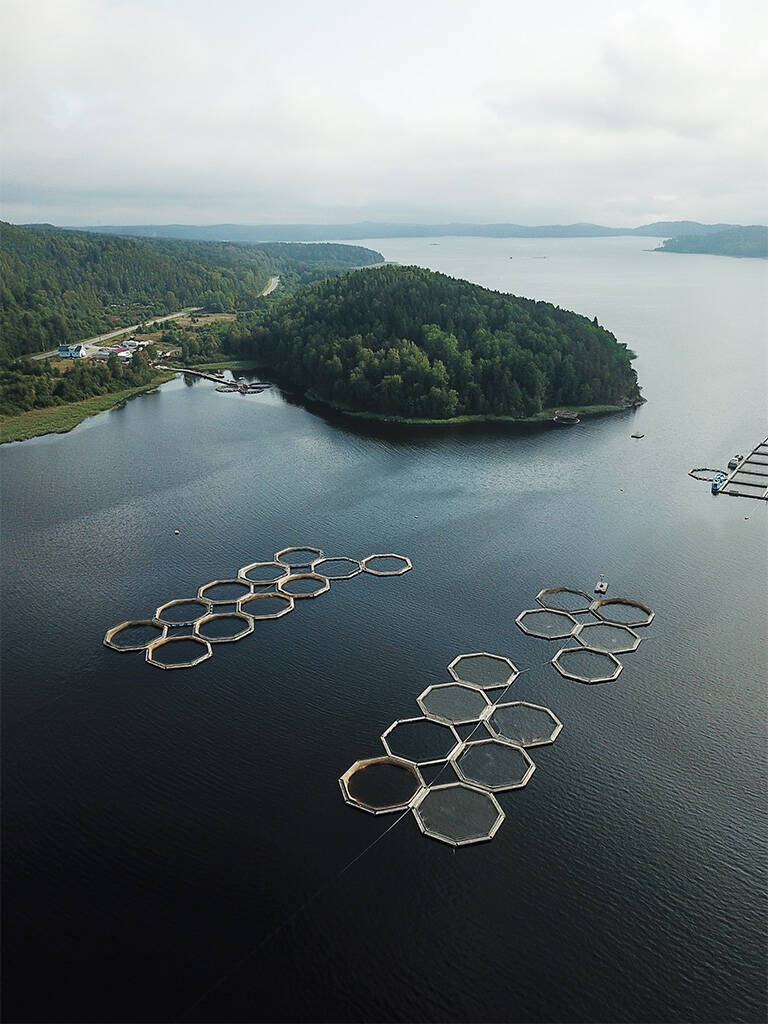
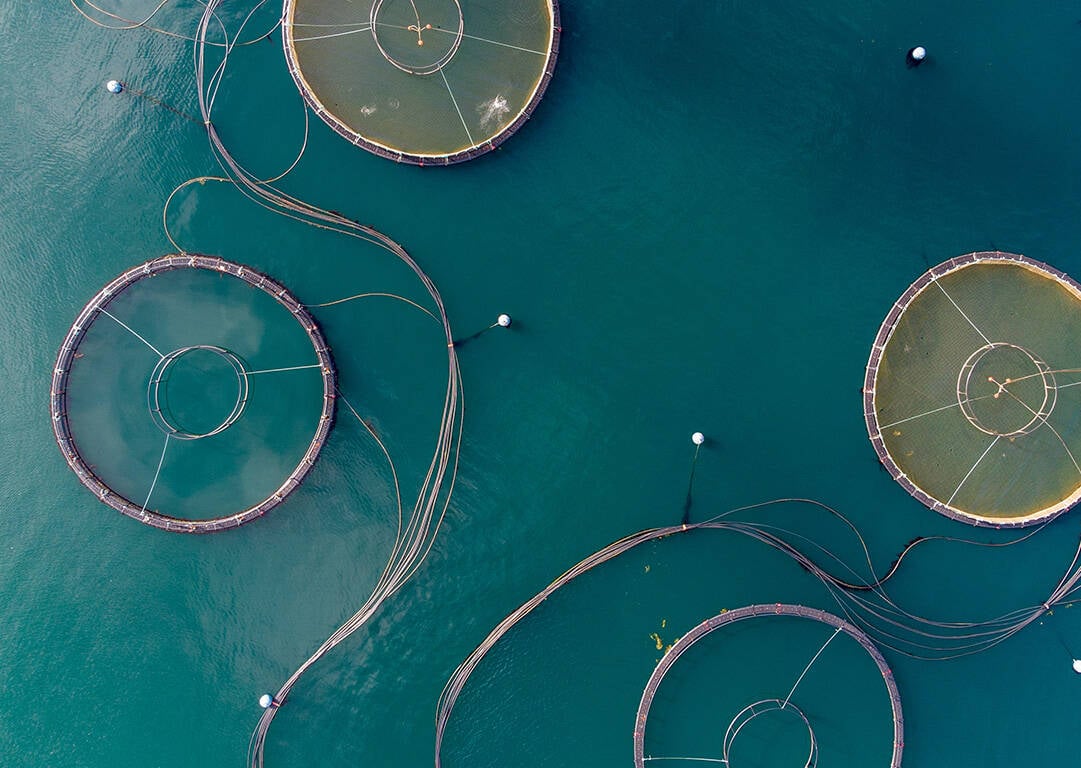
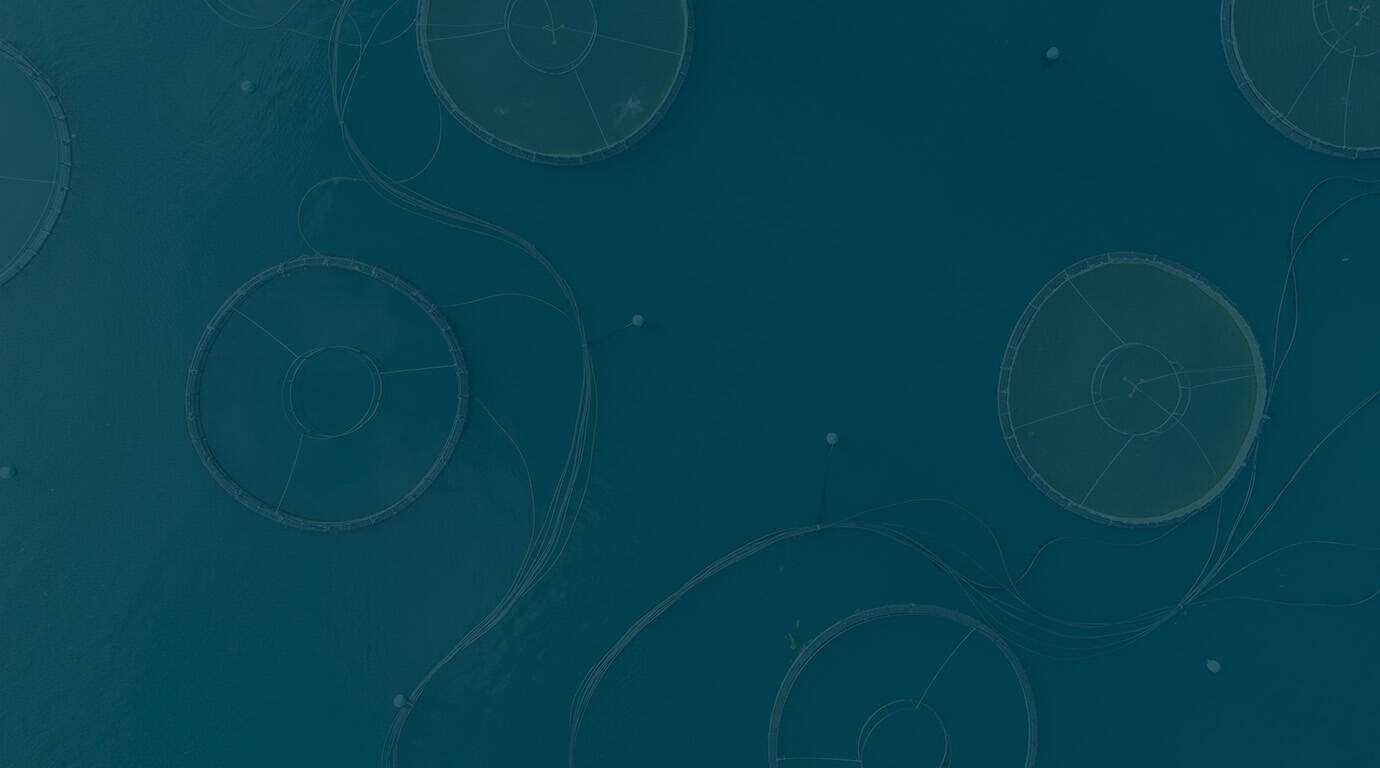
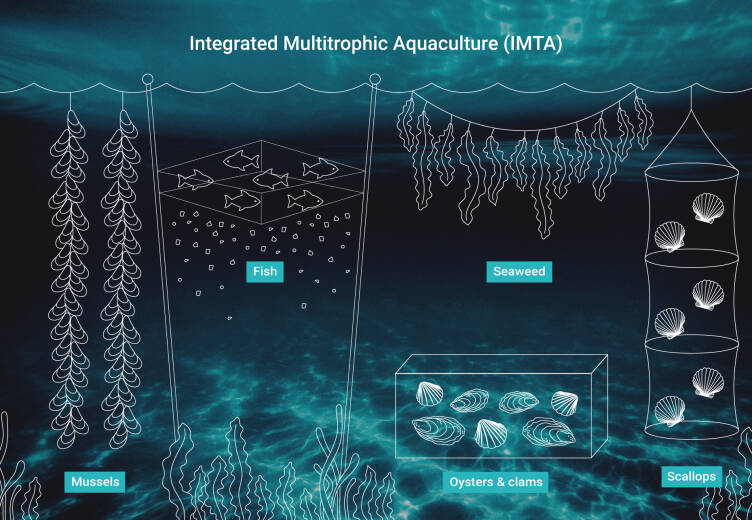

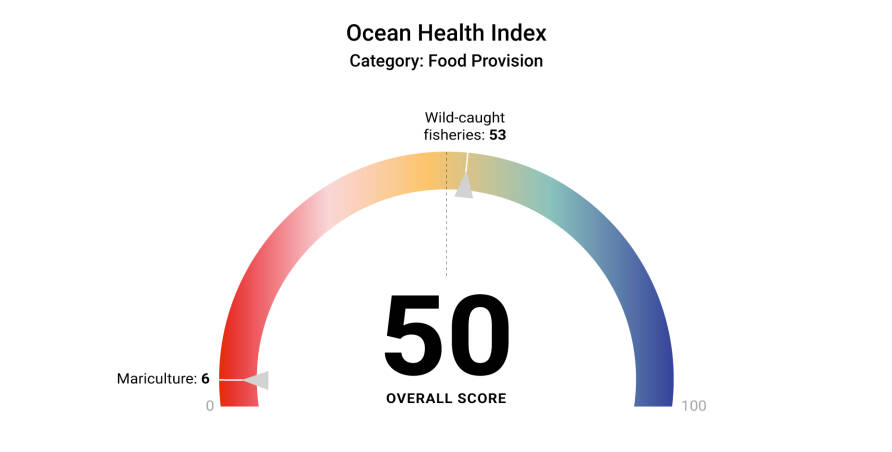
And now, a step even more outside the box. One group of Dutch farmers are looking at how they can take the farm to the water, and have created the first floating farm in the world. Floating Farm has been operational in Rotterdam since May 2019, and produces fresh food in the city, bringing food production once again close to the consumer in a sustainable, transparent way, with animal welfare as a top priority.
The goal for Floating Farm is to prevent food losses, reduce food transport and improve food quality. They even have a name for it - Trans-FARM-ation. Whether or not this will be scalable remains to be seen, but it has been a great way to create awareness around where our food comes from. Floating Farm focuses on circular farming; in addition to supplying fresh dairy to the city of Rotterdam, the vast proportion of the raw materials used, including the feed for their cows, consists of residual flows from the city itself. For example, cows are fed spent grains from a number of Rotterdam breweries, stale bread from Rotterdam bakers, and grass from the Feyenoord-soccer stadium.
Last April, ocean aquaculture start-up Alora (formerly known as Agrisea) raised a $1.4 million seed round, led by Toyota Ventures and Mistletoe Singapore. Founded in 2019, the start-up has developed a salt-tolerant growing aquaculture technology built to expand food production beyond land masses and into salinated bodies of water. CEO and Co-Founder Luke Young thinks that in 30 years time, it will be common to see large floating crop islands off the coast of many countries that grow a variety of crops suitable for the marine environment.
Alora uses a special gene-editing technique to activate and amplify the ancestral salt-tolerant genes already found in rice to allow them to thrive in ocean saltwater. Currently, Alora plans to start with rice, but will soon expand to other crops as well. Alora wants to create farmlands by installing floating platforms that hold the plants in place while their roots dip into the saltwater and grow as ocean hydroponic plants. The aim is to launch several small pilot farms early in 2022, and transition to full-scale production later in the year.
Off the coast of Italy, the Nemo’s Garden Project by an Italian ocean diving company, Ocean Reef Group, has been experimenting with cultivating strawberries, orchids, basil and lettuce in pods on the ocean floor since 2012. These ocean farmers have found a way to allow land-based crops to be grown on the surface of the ocean floor. It is the first ever underwater cultivation site of terrestrial plants.
The underwater farm is composed of six air-filled clear plastic pods, anchored to the bottom of the sea by ropes, chains and weights screws. These structures resemble large balloons and float at different depths between 15 and 38 feet below the surface of the water.
To conclude this deepdive into our oceans, take a look at these three pioneering farmers.
IMPAQT project:
high tech brought to sea
From May 2018 to April 2021, a consortium of 21 partners set out to work on a four-year project - under the name IMPAQT - aimed to promote the eco-intensification of EU-aquaculture. In their closing remarks, the researchers claim that thanks to the IMPAQT project, integrated multi-trophic aquaculture has gone from being the great unknown in Europe to a viable alternative for the sector’s sustainable development. The high-level ambition was to drive a paradigm shift toward the acceptance of IMTA by creating a more environmentally friendly and a higher yielding European industry.
IMPAQT focussed on deploying high tech innovations, like novel sensors and data sources, together with smart systems that are needed for long-term autonomous monitoring on the open ocean. An integrated high tech management system was developed and tested to enable enhanced operational decisions for animal welfare, production optimization, environmental protection and food-quality assessment.
Chopin’s ideas and experiments initially started out with salmon, kelps and mussels – the most logical species to focus on in his research area, Eastern Canada. But he emphasizes the need to diversify the composition of IMTA systems in various waters and regions across the globe to optimize yields. By embracing native species and keeping production systems diverse, farmers can follow a more ecologically-sound approach with better resilience to risks like disease outbreaks and climate change. In Chopin's opinion, IMTA is a concept, not a fixed formula. The scope of the IMTA concept is extremely broad and evolving. It can be applied worldwide to open-water or land-based systems, marine or freshwater (for example, aquaponics) environments and temperate or tropical climates.
Taking regenerative ocean aquaculture practices even a step further is the concept of integrated multi-trophic aquaculture (IMTA). This is in principle a closed-loop ecosystem approach. Thierry Chopin, considered by many the founding father of the concept, originally introduced the term to the public in 2004.
Chopin describes it as follows: “Integrated multi-trophic aquaculture (IMTA) is the farming in proximity of species from different trophic levels and with complementary ecosystem functions in a way that allows one species’ uneaten feed and wastes, nutrients and by-products to be recaptured and converted into fertilizer, feed and energy for the other crops, and to take advantage of synergistic interactions among species while biomitigation takes place.”
With IMTA, ocean farmers co-cultivate fed species (such as finfish or shrimp) together with ‘extractive’ species. Extractive species can include filter feeders (e.g., mussels and oysters) and deposit feeders (e.g., sea urchins and sea cucumbers), invertebrates and macroalgae (e.g., kelps). Ideally, the co-cultured species each yield valuable commercial ‘crops’. IMTA can synergistically increase the total output ‘per acre’ even if some of the crops yield less than they would in a monoculture. The aim is to create balanced systems for environment remediation, economic stability (improved output, lower cost, product diversification and risk reduction) and social acceptability (better management practices).
aquaculture
The Ocean Health Index is a comprehensive framework used to measure our oceans’ overall health on global and regional scales. A global score of 70 has been more or less stable throughout the ten years that it has been measured. However, there are significant disparities within specific categories and regions.
Great potential for mariculture
(score 6 out of 100)
Mariculture refers to the commercial harvest of seafood that is farm-raised in the ocean and along the coast. Even though mariculture has been one of the fastest growing food sectors in the world over the past 20 years (FAO 2020) global mariculture scores have hardly improved since 2012. This implies that many countries are not reaching their mariculture production potential, and many are not increasing production in a sustainable manner. The data demonstrates an enormous opportunity for improvement.
Gradually, Smith transitioned the farm into one of America’s first vertical ‘3D’ ocean farms. Regenerative ocean farming has been identified as a key solution to combat climate change. It has the power to sequester carbon on land and sea, reduce methane production in livestock, rebuild marine ecosystems, enrich soil, and address the global plastics problem.
The polyculture cultivation method allowed Smith to produce shellfish and seaweeds that require zero input: no irrigation, no pesticides, and no fertilizer. In 2014, Smith co-founded GreenWave, a nonprofit organization that sets out to help other ocean farmers replicate his ‘regenerative ocean farming model’. GreenWave provides training, toolkits and a community for farmers, researchers and entrepreneurs that want to join in action. The foundation Smith has built allows for others to scale up a sustainable way of farming our oceans.
GreenWave’s ten year goal is to provide training, tools, and support to a baseline of 10,000 regenerative ocean farmers to catalyze the planting of one million acres and yield meaningful economic and climate impacts. The demand for the program has exceeded expectations, with now more than 8,000 people on the waiting list and requests to start farms in over 100 countries. On the website, Smith emphasizes just how low the entry barrier for starting ocean farming is. “Since the farms sit vertically below the surface, they produce high yields with a small footprint. Anyone with 20 acres, a boat, and $20-50K can start their own regenerative ocean farm.”
Gradually, Smith transitioned the farm into one of America’s first vertical ‘3D’ ocean farms. Regenerative ocean farming has been identified as a key solution to combat climate change. It has the power to sequester carbon on land and sea, reduce methane production in livestock, rebuild marine ecosystems, enrich soil, and address the global plastics problem.
Bren Smith is a former Canadian commercial fisherman who has turned to ocean farming. He is a pioneer and pacesetter in ‘3D’ ocean farming, or as he now likes to call it, regenerative ocean farming. In his ocean farm in Long Island Sound, he is growing shellfish and kelp in vertical underwater gardens. Smith strongly believes ocean farming is the farming model of the future.
Smith left the commercial fishing boats of the Bering Sea in 1992 after the cod fishery in his home fishing grounds, Newfoundland, collapsed completely due to persistent overfishing. He turned to aquaculture and worked on salmon farms for several years. Smith soon was disappointed by the monoculture that was inherent to the industry as it was proving to be as destructive as commercial (over)fishing was. Determined to find a more sustainable way of working, in 2005 he participated in a program in Long Island Sound that leased shellfishing grounds to young commercial fishermen. He leased 20 acres of water on Thimble Island Ocean Farm in Connecticut, where he raised oysters, mussels and kelp.
According to the Food and Agriculture Association of the United Nations (FAO), one third of the world’s fish stocks have reached their biological limits from overfishing – yet at the same time we face a growing global population that requires more food each year. Fish farming has been acknowledged as a solution to combat overfishing while keeping up with the much needed growth in food production. However, while the industry was being built, traditional fish farms faced many challenges, such as waste build-up and feces on the seabed, fish diseases, parasite outbreaks and fish escapes. One question remains: how we will be able to sustainably scale-up ocean farming.
What is ocean farming?
Ocean farming, which is also known as mariculture or marine farming is a specialized branch of aquaculture involving the cultivation of marine fish, crustaceans, molluscs, aquatic plants, algae and other organisms, in (a) enclosed sections of the open ocean, (b) farms built on coastal waters, or (c) in artificial tanks or ponds which are filled with seawater.
Moniek de Jongh Wouter Noordijk
June 8 is World Oceans Day, dedicated to unite a global audience to protect and restore our oceans. There is a growing awareness that our oceans may play a crucial role to help mitigate two pressing crises - climate change and food access. Adopting regenerative ocean farming practices will help build resilient marine ecosystems that benefit both people and the planet. Integrated multi-trophic aquaculture – IMTA – is taking aquaculture to the next level, and this just might be as sustainable as it gets.
World Oceans Day was first declared on June 8, 1992 in Rio de Janeiro at a parallel event at the United Nations Conference on Environment and Development (UNCED). In December 2009, the United Nations Assembly officially recognized June 8 as World Ocean Day. This year’s theme: Revitalization: Collective Action for the Ocean.
Can mariculture help solve our food crisis?
Regenerative
ocean farming
8 min
